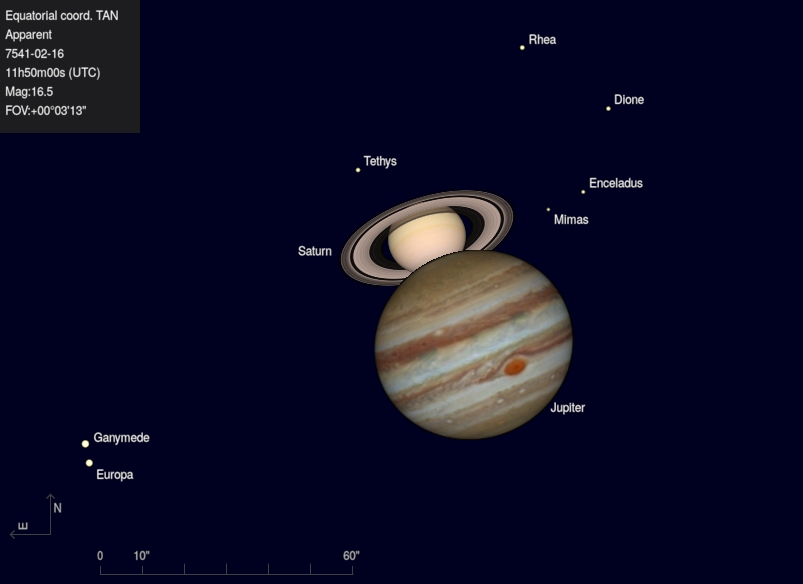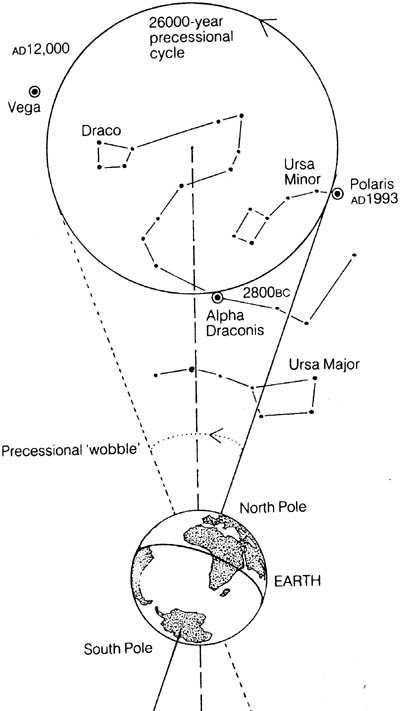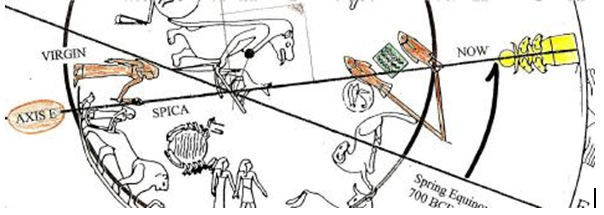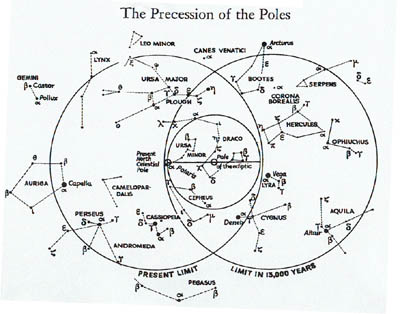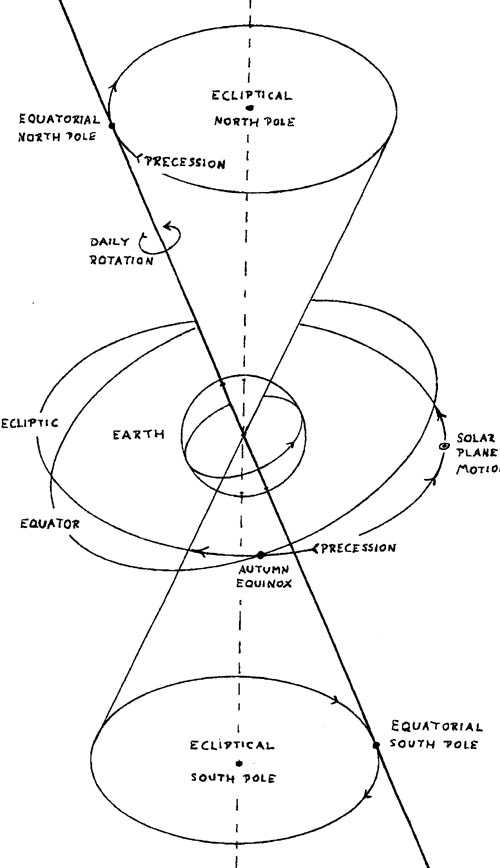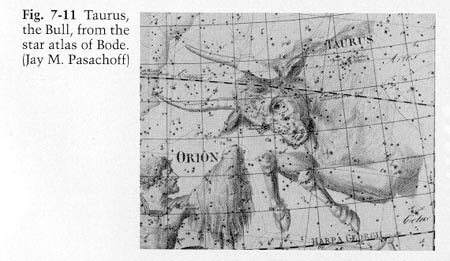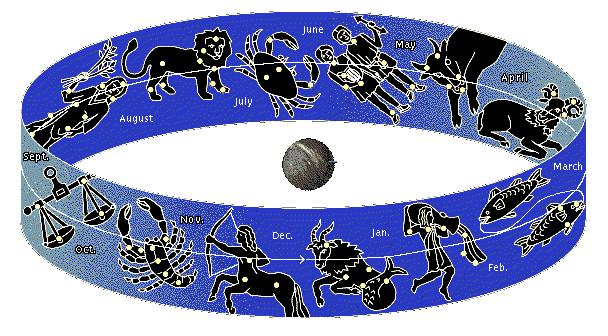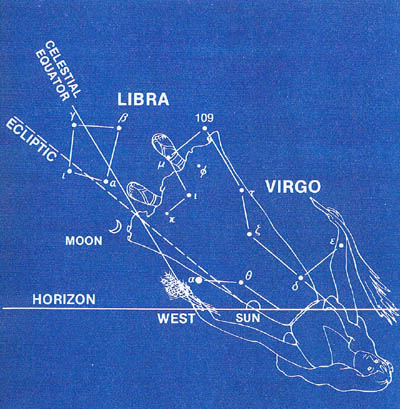
The Blood Moon Lunar Eclipse Tetrad and the Destruction of the Jerusalem Temple
The solar and lunar eclipses in the Blood Moon Tetrads during the formation of the state of Israel in 1949-50, to the reclamation of Jerusalem by Israel, marked by the 1967-68 Blood Moon Tetrad, to the recent 2014-15 Blood Moon Tetrad, all exhibit how God speaks to His people via His Word, Spoken, written and incarnate, confirmed by these heavenly signs. As in the 1949-50 and 1967-68 Tetrads, the Blood Moons have indicated war in Israel was is the case historically in 168-66 BC.

As we have seen with previous Blood Moon Lunar and Solar Eclipses marking the defiling of the Jerusalem Temple in 70 AD [Table 2.], these are noteworthy and instructive concerning current and future events. The subject of this study concerns a relevant aspect of Biblical Prophecy relating to events of the end-times that we can see coming together before our eyes.
In end-time prophecy, Daniel 8 is a key section of Scripture. Scholars are agreed in Daniel 8 that the goat’s first horn (the horn that was broken) is Alexander the Great, and the four horns arising afterwards are four generals who divided his empire, from which Antiochus IV arose. The symbols of the ram and he-goat, in Daniel 8 are the kings of Persia and Greece.
Antiochus’ IV took the title “Epiphanes” (God Manifest) when he took the Seleucid throne in 175 BC. Antiochus’ IV efforts to Hellenize the kingdoms he conquered had an effect on other cultures besides Israel. Their various pagan idols or “stars” were cut down by Antiochus IV to establish Hellenized religious observances throughout his kingdom, [Dan. 8:10]. Although the books of the Apocrypha hold little Scriptural value in the Canon of God’s Word, the Books of the Maccabees are valuable concerning the historical record of this time period. These records from Maccabees show the nature of the conflict Antiochus IV engaged with Israel, his unbridled ego and events surrounding the Temple at Jerusalem.
Figure 1.

Bust of Antiochus IV at the Altes Museum in Berlin. 1
1 Macc. 1:7-10 [175 B. C. 137th Seleucid year; Antiochus IV begins his reign]
7 Alexander had reigned twelve years when he died. 8 Each of his officers established himself in his own region. 9 All assumed crowns after his death, they and their heirs after them for many years, bringing increasing evils on the world. 10 From these there grew a wicked offshoot, Antiochus Epiphanes son of King Antiochus; once a hostage in Rome, he became king in the 107th year of the kingdom of the Greeks.
Daniel 8:1-22 reveals the times of Daniel, with a promise that God would bring an end to Israel’s oppression. Antiochus VI Epiphanes, took the Seleucid throne of Syria in 175 BC. In 167 BC that there was a revolt in Jerusalem, where he sent troops to suppress, halting the daily Temple sacrifices [Dan. 8:11] and polluting it, 167-164 BC. His attempt to blot out Judaism ultimately led to a reaction, led by Judas Maccabee and his cohorts, who won a series of dynamic military victories over the Seleucids to reclaim and purify the Temple three years later.
As a forerunner of the end-times Anti-Christ, Antiochus IV seemed successful in promoting his secular agenda. Circumcision and Sabbath-observance were being extinguished. Greek paganism under him, attempted to eliminate the true worship of Almighty God. But God chose Israel to bring the Messiah into the world, and He chose Jerusalem, for the location of His earthly Temple, as the place where the true Lamb of God would offer his life for all Mankind. The temple, the people of Israel, and Jerusalem were to be preserved together until the glorious arrival of Jesus Christ. Once the Messiah came to fulfill his ministry, the Temple would be razed in A.D. 70, as Jesus prophesied in [Matt. 24], but in 164 BC the temple had to be cleansed for God to fulfill His plan. A new aspect of this study compares the solar and lunar eclipses marking the 70 AD temple destruction with the Blood Moon Tetrad of 168-166 BC. Adding the Biblical Astronomy of the Solar and Blood Moon Lunar eclipse data provides a level of scientific verification to the historical data of this period previously not seen. Much of what was prophesied by Daniel has came to pass, but the complete story has not yet been fulfilled. This certainly puts a heightened focus on the current events leading to the Third Jerusalem Temple.
To accomplish this required the faithful of Israel to stand against Antiochus‘ IV political and military pressure. Among the resistance was the priest Mattathias, who fled Jerusalem to the mountains with his sons. Others joined them, and they began raids removing pagan altars. When Mattathias neared death, he appointed his son Judas Maccabeus as the rebel captain, whose power and influence grew in their battles against pagan enemies. Judas’ men fasted and believed God to defeat the armies Antiochus sent against them, and God aided their righteous efforts, so that in under 3 years the brave warriors of Israel prevailed.
Figure 2.

The Triumph of Judas Maccabeus, Rubens 2.
Antiochus VI Epiphanes, plundered the Jerusalem Temple in 169 BC and desecrated it in late 167 BC by commanding that sacrifices be made to Zeus on an altar built for him. Finally, Judas and his men reached Jerusalem. Upon seeing the desolation, the profaned altar, the gates burned, they made a great lamentation, rending their clothes and casting ashes on their heads. In only three days, 80,000+ were lost in a massacre of young and old, with many of these meeting a violent death, and a similar number sold into slavery, [2 Macc. 5:11-14]. They proceeded to cleanse the entire area, built a new clean altar, made new holy vessels, and put the lampstand, table, and altar of incense into their rightful places. On the 25th of Kislev, in the year 164 BC, when the Temple was rededicated they celebrated its cleansing and dedicated it anew to the living God, with great rejoicing. No pagan tyrant will ever be able to withstand Almighty God. This event is celebrated in the annual Hanukkah festival. As Jon Nessle suggests: “if we count back 2300 days from 164 BC, it brings us to the month of Av on the Hebrew Calendar in 170 BC.”3
Was the Sanctuary trodden underfoot for 2300 days by Antiochus IV? This is a feasible thesis, and a purpose of this study is to investigate whether the Biblical Astronomy supports it, which we consider below. Antiochus wished to conquer Egypt, but he had to stabilize his empire first, including Israel. His plan was to consolidate its cultural and religious aspects. During his return from the military campaign in Egypt via Jerusalem, Antiochus left a swath of destruction burning many houses, killing and enslaving tens of thousands of Jews and attacking the Jerusalem Temple, the center of life in Israel. The Syrian soldiers robbed the temple treasures and on 15 Kislev, 167 BC Antiochus IV, illustrating why he took the title “Epiphanes” (God Manifest), erecting a statue of the Greek god Zeus etched with his own face in the central altar of the Jerusalem Temple, (1 Macc. 1:54). Then on 25 Kislev, 167 BC he desecrated the most holy place in the temple while destroying the holy scrolls.
As Rev. Nessle states regarding the 2300 days: “In my analysis of the prophecies of Daniel, I showed that this time span very well could be the entire time span that the sanctuary was trodden under-foot by the army of Antiochus IV. We know from Maccabees that the end point of the “desecration of the Temple was on Kislev 25, or Dec. 16th, in 164 BC.”4 This initiated the Hanukkah festival when the Temple was rededicated, due to the desecration of the abomination by Antiochus IV, as a forerunner of the end-times Anti-Christ.
The prophecy in Daniel 8 is in two parts, “the first section covers the Persian Empire up through the reign of Antiochus Epiphanes whose desecration of the Temple was the first mention in Daniel of the Abomination that took place in the Temple.”5
Figure 3. Jerusalem Temple model-70 AD.

“A prominent feature is that it gives a time span of 2300 days. This is exactly 78 Lunar months. When one compares with the Book of Maccabees, the time span does not fit the total length of time the Temple was actually desecrated. In (2 Macc. 1:54-59) Antiochus set up the abomination; the 15th of Kislev and sacrificed on 25th of Kislev [12/6/167 BC]. The Temple was cleansed three years later [2 Macc. 4:52, 25th of Chisleu 12/16/164). But there is more. The phrase “trodden underfoot,” is also included. History records that the Temple was rededicated on the 25th of Kislev in 164 which was the inception of the Jewish Feast of Hanukkah. If we consult Parker and Dubberstein’s ancient Jewish calendar, we can see that the years 170 and 167 had Intercalary 13th months (II Adar) in them. So counting back 78 months from the Temple cleansing and the end of the abomination desolation, brings us to the end of the 5th month Av, in 170 AD. Antiochus IV fought the Egyptians in the Battle of Mt. Kasios in early November in 170 AD. Parker and Dubberstein tell us that would have been in the middle of the 8th month. The beginning of the 2300 days was the 26th of Av (the month Av is always 30 days long). This date would have been 80 days before the battle. The [orbis.stanford.edu] website calculates that a Roman Legion would take about 50 days to travel 300 miles from Damascus to the Battle site of Pelusium via Jerusalem (at speed of Ox Carts). So it is not implausible at all that the Sanctuary was “trodden underfoot” by advanced elements from Antiochus in the Summer of 170.”6
Since Antiochus is a type of the Anti-Christ, this qualifies as a “preliminary fulfillment” of this prophecy, yet to be completed by the end-times anti-Christ. We can see however how Antiochus IV fulfills the prophecies of Daniel 8;
Dan. 8:11-14
11 Yea, he magnified {himself} even to the prince of the host [To God Almighty or the Jewish High Priest] and by him the daily sacrifice was taken away, and the place of the Sanctuary was cast down. [Antiochus Epiphanes desecrated the Temple] 12 And an host was given {him} against the daily sacrifice by reason of transgression, and it cast down truth to the ground; and it practiced [transacted business], and prospered.
13 Then I heard one saint (angel) speaking, and another saint (angel) said unto that certain {saint} which spake, How long {shall be} the vision {concerning} the daily {sacrifice}, and the transgression of desolation, [reference to the “Abomination of Desolation”] to give both the sanctuary and the host to be trodden under foot? 14 And he said unto me, Unto two thousand and three hundred days; [Exactly 78 Lunar Months*] then shall the sanctuary be cleansed. [Time span includes all the parts of verse 13] {insertions by Jon Nessle in red} 7
*A numerical note on the 2300 days equaling 78 lunar months is that (78=6 x 13), 6 as the number of man destitute of God multiplied by the number of rebellion or apostasy.8 These are fitting links since Antiochus IV was a type of the end times Anti-Christ and he instigated this version of the Abomination Desolation. Also the relation between lunar months and this Blood Moon Tetrad marking key dates as the Temple was being trodden underfoot during the 2300 days is notable. Other elements of the history of these events are recorded in the Book of Maccabees and in our timeline below.
This explanation says that the entire temple defilement lasted 2300 days, or six years plus 110 days, about 6 1/3 years from 170-164 BC, not a complete 7 year period as is many times assumed.
Table 1. Book of Maccabees 9
1 Mac 1:10 175 BC. 137th Seleucid year; Antiochus begins reign
1 Mac 1:10-15 *171 BC. desolating covenant to worship Greek gods
26th of month AV, 170 BC- 78 Lunar months prior to the cleansing of the Temple in 164.
Antiochus fought the Egyptians in the Battle of Mt. Kasios early November/mid-8th month 170 BC. [Seleucid year 143]
1 Mac 1:20-28 169 BC; plunders Jerusalem temple
1 Mac 1:54-59 15th of Kislev, 167 BC; set up abomination 25th of Kislev 12/6/167, then sacrificed abomination of desolation in the Seleucid year 145
2 Mac 6:1, 2 “compel the Jews to forsake the laws of their fathers and cease to live by the laws of God. Also polluted the Jerusalem temple calling it the temple of the Olympian Zeus.”
1 Mac 4:42-58 25th of Chisleu 12/16/164; sanctuary cleansed; Antiochus died in Seleucid year 148. 10
2 Mac 10:1-8 Sanctuary purified
1 Macc. 1:20-28
20 After his conquest of Egypt, in the year 143, Antiochus turned around and advanced on Israel and Jerusalem in massive strength. 21 Insolently breaking into the sanctuary, he removed the golden altar and the lampstand for the light with all its fittings. 22 Together with the table for the shewbread offering, the cups, the golden censers, the veil, the crowns, and the golden decoration on the front of the Temple, which he stripped of everything. 23 He made off with the silver and gold and precious vessels; he discovered the secret treasures and seized them. 24 and, removing all these, he went back to his own country, having shed much blood and uttered words of extreme arrogance. 28 The earth quaked because of its inhabitants and the whole House of Jacob was clothed with shame.
Key points of this record of Antiochus plundering and defiling the Jerusalem Temple in the 2300 days from 170-164 BC, are highlighted in the general celestial markings of the Blood Moon Tetrad of 168-166 BC. We will find added meaning as we compare this Blood Moon Tetrad to the the Solar and Lunar eclipses surrounding the Temple destruction in 70 AD.
Figure 4. Blood Moon over Jerusalem

The Blood Moon Tetrad of 168-166 BC.
The Solar and Lunar eclipse activity during this period from 168 BC to 166 BC is noteworthy around the desolation and plundering of the Temple at Jerusalem by Antiochus IV. Although there may have been other eclipse activity during this 3 year period, the focus of this study is the Blood Moon Tetrad and Solar eclipses starting in mid-168 BC. This Tetrad includes 3 Total Lunar Eclipses in 167-166 BC. Notably the Solar and Blood Moon lunar eclipses are paired in tight intervals starting with the first Total Lunar Eclipse of this Blood Moon Tetrad. 11
![]() Total Solar Eclipse
Total Solar Eclipse
On July 5th there was a Mercury-Regulus conjunction in Leo. On July 17th 168 BC, there was a Total Solar Eclipse with Sun and Moon in Cancer. Later in July of 168, a Jupiter-Mercury-Regulus Alignment occurred in Leo. These opening signs in Leo are similar to the opening signs of the 2016 Solar and lunar eclipses on Hebrew Feasts and Holy Days. [see Table 2 below].
![]() Total Lunar eclipse
Total Lunar eclipse
The first Total Lunar Eclipse of this Blood Moon Tetrad occurs on Dec. 27th, 168 BC, after the Winter solstice. The Blood Moon and Neptune were in Scorpius, with the Scorpion signifying the war Antiochus IV was bringing to Israel. The Sun was in Capricorn, with Saturn in Libra. Mars was unified with Leo the Lion, while Jupiter was in Virgo showcasing the signs of the Celestial Sphinx. Venus the Bright and Morning Star was in Sagittarius, whose arrows were aimed at Antares the heart of the Scorpion-enemy.
![]() Partial Solar Eclipse
Partial Solar Eclipse
About 2 weeks after the first Blood Moon and opening the New Year on Jan. 10th, 167 BC, there was another Solar Eclipse with the Sun and Venus in Capricorn, close to the border of Aquarius. Mercury was in Sagittarius. Mars-Micheal was in Leo with Jupiter in Virgo, depicting the signs of the Celestial Sphinx, as seen at the birth of Christ. This was the first of 4 luni-solar eclipse pairs in this Tetrad.
![]() Partial Solar Eclipse
Partial Solar Eclipse
Opening the Summer season on June 7th of 167 BC, was another Solar Eclipse, two weeks prior to the Summer Solstice Total Lunar Eclipse. Sun was in Gemini, with Mercury. Jupiter was near Mars in Virgo. Venus was in Cancer with Saturn in Libra. If we take into account the next solar eclipse a month later we can see the Second Blood Moon of this Tetrad bracketed tightly between these two Solar Eclipses.
![]() Total Lunar eclipse
Total Lunar eclipse
The 2nd Blood Moon of the Tetrad, was a Total Lunar Eclipse, June 21st, 167 BC, at the Summer Solstice. The Sun was in Gemini, and Saturn in Libra. Mercury and Venus in Leo, with a Jupiter-Mars union in Virgo again emphasizing the Celestial Sphinx. Mercury-Gabriel was heralding the Bright and Morning Star in Leo the Lion of the tribe of Judah, while the King Planet Jupiter was unified with Mars-the Warrior Archangel standing against the forces of Antiochus IV.
![]() Partial Solar Eclipse
Partial Solar Eclipse
The following month on July 7th, 167 BC there was another Solar Eclipse, forming a pair of solar eclipses bracketing this Blood Moon. In July of 167 BC, the Sun was in Cancer, with Saturn in Libra. Mercury and Venus were in Leo, with Jupiter and Mars in Virgo again marking the Celestial Sphinx.
![]() Partial Solar Eclipse
Partial Solar Eclipse
On Dec. 1st there was another key Solar Eclipse, which gets our attention 1st because it occurred only 5 days after Antiochus set up the abomination on Nov. 26th, or the 15th of Kislev, sacrificed 10 days later on 25th of Kislev or 12/6/167 BC. Venus and Mars were in Capricorn as the righteous sacrifice opposed to Antiochus’ abomination. The Sun was in the Bow of Sagittarius with arrow aimed at the heart of the Scorpion enemy. Mercury was near Neptune in Ophiuchus showing the ongoing conflict between the Serpent bearer and Scorpius. Saturn was in Libra. Then only 10 days later the 3rd Total Lunar Eclipse of this Blood Moon Tetrad followed.
![]() Total Lunar eclipse.
Total Lunar eclipse.
167 BC closes out with a Third pair of Eclipses in December. followed by the 3rd Blood Moon of this Tetrad, with a Total Lunar Eclipse on Dec. 16th. On Dec. 14th, 167 BC, the Blood Moon and Jupiter were at Virgo’s Feet, moving towards Scorpio. The Sun in Sagittarius, Mars and Venus in Capricorn, and Saturn in Libra. This sign in mid-Dec. 167 BC with the Moon at Virgo’s Feet, recalls the Rev. 12 sign, at the birth of Christ. It is notable that this Blood Moon on Dec. 16th foreshadows the cleansing of the Temple and the initiation of Hannukah, 3 years later on Dec. 16th, 164 BC, or the 25th of Chislev. This is verified in 1 Macc. 4:54 below where “the altar was dedicated, at the same time of year and on the same day when the Gentiles had originally profaned it.”
![]() Annular Solar Eclipse
Annular Solar Eclipse
The year 166 BC also witnessed eclipse activity starting the 28th of May with a Partial Solar Eclipse. The Sun and Mercury are in Gemini, with Mars and Venus in the Bull of Taurus. Saturn is in Libra, with Jupiter is at Virgo’s feet. Here we see a 4th pair of tightly packed eclipses wrapping up this Blood Moon Tetrad.
![]() Total Lunar eclipse
Total Lunar eclipse
This was followed the next month by the final Blood Moon of this Tetrad, in a Total Lunar Eclipse on June 11th, with the Moon in Aries less than two weeks from the Summer Solstice. The Sun is still in Gemini, with Mars and Venus in the Bull of Taurus. Mercury has now moved into Cancer.
![]() Annular Solar Eclipse
Annular Solar Eclipse
Later on Nov. 20th, 166 BC there was a Annular Solar Eclipse, framing the final Blood Moon of the Tetrad. The Sun, Moon and Neptune were in Ophiuchus. Jupiter was in Libra, with a Mercury-Saturn union in Scorpio. Venus in the Bow of Sagittarius. Mars was in Virgo protecting Israel.
![]() Partial Lunar Eclipse
Partial Lunar Eclipse
Finally on Dec. 6th there was a Partial Lunar Eclipse closing out 166 BC, with the Moon grazing by Jupiter in Libra. Jupiter is at Scorpio’s border joining Saturn in Scorpio, with Mercury and Neptune in Ophiuchus. The Sun and Venus were in Sagittarius. This was 1 year to the day after the sacrifice of the Abomination Desolation on 25th of Kislev or 12/6/167 BC. 12

1 Macc. 1:37-57 documents the year 168 BC that witnessed the plundering of Jerusalem, and the halting of sanctuary services, not to mention the abomination desolation under the decree of Antiochus IV.
1 Macc. 1:54-57
54 On the fifteenth day of Chislev in the year 145 the king built an appalling abomination on top of the altar of burnt offering; and altars were built in the surrounding towns of Judah. 56 Any books of the Law that came to light were torn up and burned. 57 Whenever anyone was discovered possessing a copy of the covenant or practicing the Law, the king’s decree sentenced him to death.
1 Macc. 4:49-59
49 They made new sacred vessels, and brought the lamp-stand, the altar of incense, and the table into the Temple. 50 They burned incense on the altar and lit the lamps on the lamp-stand, and these shone inside the Temple. 51 They placed the loaves on the table and hung the curtains and completed all the tasks they had undertaken. 52 On the twenty-fifth of the ninth month, Chislev, in the year 148 they rose at dawn 53 and offered a lawful sacrifice on the new altar of burnt offering which they had made.
54 The altar was dedicated, to the sound of hymns, zithers, lyres and cymbals, at the same time of year and on the same day on which the Gentiles had originally profaned it.
55 The whole people fell prostrate in adoration and then praised Heaven who had granted them success.
56 For eight days they celebrated the Dedication of the altar, joyfully offering burnt offerings, communion and thanksgiving sacrifices. 58 There was no end to the rejoicing among the people, since the disgrace inflicted by the Gentiles had been effaced. 59 Judas, with his brothers and the whole assembly of Israel, made it a law that the days of the Dedication of the altar should be celebrated yearly at the proper season, for eight days beginning on the twenty-fifth of the month of Chislev, with rejoicing and gladness; [164 BC]
After three years of struggle, the Greek armies retreated from Jerusalem, and the Maccabees entered the Holy Temple which the Greeks had defiled, reconsecrated it to God, and began again the Temple service. Among other things, they wanted to relight the olive oil candlestick (Exodus 25), but could only find one day’s supply of undefiled oil – and it would take eight days to make and bring more oil. Miraculously, the Menorah stayed lit for 8 days (Talmud, Shabbat 21b), allowing enough time for new oil to be prepared and brought. The significance of the miracle is that it demonstrated that the Hand of God was present. The faithful were overjoyed, because the Hand of God meant everything to them. This
is what Hanukkah represents: remaining close to God; and the rejection of Hellenization. The priests instituted the festival of Hanukkah to honor the miracle. This became known as the festival of lights, and the purpose for lighting the Hanukkah-Menorahs. This Hanukkah-Menorah, is a special version of the original seven-branched Menorah, with eight candles, commemorating the miracle of the oil lasting eight days, and the ninth to hold the central candle used to light the others. The military victory would not be celebrated if not for the miracle of the oil.

Table 2.
Solar & Lunar Eclipses from 69-71 AD. 2016 Solar & Lunar Eclipses omitting Adar 2:
Jupiter-Regulus Conjunction 10/15/69 in Leo
Partial Lunar Sukkot 10/18/69
Total Solar Nisan 1 3/30/70 Total Solar Eclipse 3/9/2016 on Nisan 1
Penum lunar Passover 4/14/70 Penum Lunar Eclipse-Passover 3/23/2016/Nisan 14
Rev. 12 Sign of the Woman 8/27/70
Annular Solar Rosh Hash 9/23/70 Annular Solar Eclipse 9/3/2016/Trumpets Feast
Penum lunar Sukkot 10/08/70 Penum Lunar Eclipse 9/16/Sukkot/9-16 to 9/23/16
Partial Lunar Purim 3/4/71
These dates may look familiar to those following my Biblical Astronomy Blog [blog.try-god.org], as the first 2 Total Solar Eclipses of 2016 form the continuation of Solar and Lunar signs on Hebrew Feast and Holy days after the Blood Moon Tetrad of 2014-15. Due to a lack of consensus on the appearance of Aviv Barley in Israel, the alignment of these solar eclipses with Hebrew Feast and holy days went mostly unnoticed in 2016. But they are key as they represent a direct link to the Aug. 21st, 2017 Pan-American Total Solar eclipse. An intriguing detail about the 2nd Blood Moon of each lunar triple bracketing the 2014-2015 Blood Moon Tetrad is that it was visible over Jerusalem. This provides a direct link with Blood Moon Tetrad to the razing of the Jerusalem Temple in the Hebrew Sabbath years of 586-587 BC and 69-70 AD. Nebuchadnezzar burnt the Temple in 587-586 BC [2 Chron. 36:17-20], and in 69-70 AD, Titus and his Roman legions burnt the Temple. In both cases Jerusalem lay desolate for the next 50 years on the Jubilee Calendar. 13
With the solar and lunar eclipses marking the 69-70 AD destruction of the Jerusalem Temple, 70 AD was the last year Jerusalem was under control of Israel until the Blood Moon Tetrad of 1967-68. These Luni–Solar Eclipses of 2016 mirror exactly the 69-70 AD solar and lunar eclipses on holy days and Hebrew feasts. Its also noteworthy that the triple union of Jupiter-Regulus marking the birth of Christ, is linked to the Temple destruction in Jerusalem foretold by Christ [Matt. 24:2], since the next Jupiter-Regulus conjunction did not recur till Oct. 15th, 69 AD. 14
By putting these birth signs of Christ together with the physical Temple being destroyed, it recalls Jesus’ words in [Jn. 2:19-20] where Jesus links the Temple’s destruction, wherein he was standing when he said “destroy this temple,” with the “temple of his body.” Christ embodied the Temple in two aspects; first as the Bride of Israel when he spoke this prophecy, and later in the Church of Gentile Christians communing with the Heavenly Father spiritually after the Day of Pentecost in the Age
of Grace, [Eph. 2:11-22]. Since Jesus superseded the physical Temple in his Spiritual body of the Church, the Jerusalem Temple on the Mount will not be seen again until its daily sacrifices are restored prior to Jesus’ 2nd Coming. The 69-70 AD solar and lunar eclipses marking the Roman’s destruction
of the Temple are reflected in the solar and lunar eclipses of 2016, leading to the 2017 rewind of the Great Wonder of Rev. 12:1-2. Amazingly, another version of this Rev. 12 celestial wonder takes place on August 27th, in 70 AD, in between the 4/14/70 Passover Lunar Eclipse, and the 9/23/70 Rosh Hashanah Solar Eclipse! Wow, that (9/23 date) sure keeps popping up…
Figure 5. The Rev. 12 sign on August 27th, 70 AD: With a Jupiter-Venus union. 15

The woman has a crown of twelve stars, with Jupiter and Venus in such close union they appear to merge into one star just as they did in 2 BC, except this time in the lower rear paw of Leo. The Sun is clothing Virgo and the Moon near her feet. The planets Jupiter and Venus are also aligned with Mercury-Gabriel and the King Star Regulus in Leo. What is extraordinary with this version of the Rev. 12 Sign is that it occurs in the center of the solar and lunar eclipses falling on Hebrew Feast and holy days as they also marked the destruction of the Jerusalem Temple in 70 AD.
Just as these signs of the Celestial Sphinx are evident in the Blood Moon Tetrads of 168-166 BC with Antiochus, and 70 AD in Titus’ destruction of the Jerusalem Temple, by types of the Anti-Christ, they were also present not only at the birth of Christ, on Sept. 11th 3, BC, but also the Rev. 12 signs on 9/23/17. This of course supports our thesis of the Celestial Prelude. The reader can refer to previous studies on the Celestial Sphinx and the Celestial Prelude to gain added context for these subjects.
As we can see these celestial signs of the end-times lighting up the sky, we are encouraged and rejoice in the Hope of our quickly returning Lord Jesus Christ.
God Bless!
Footnotes
1. “Bust of Antiochus IV” [https://everipedia.org/wiki/Altes_Museum/].
2. The Triumph of Judas Maccabeus [https://en.wikipedia.org/wiki/Peter_Paul_Rubens]
3. “Analysis of Prophecies in Daniel.” [ppg. 15-16.] Jon Nessle
4. The Abomination of Desolation and other Prophetic terms of Biblical Eschatology. Jon Nessle.
5. “Analysis of Prophecies in Daniel.” [p. 15-16] Nessle
6. IBID
7. Ibid p.14
8. Number in Scripture, E.W. Bullinger
9. 1 & 2 Books of Maccabees
10. *The sources of the dates above are a small representation which agree with Matthew Henry and Jamieson, Fausset, and Brown. The Scofield Reference Bible, (Congregational), 1909; The New Bible Commentary, (Presbyterian influence), Inter-Varsity Fellowship, 1953; The Wycliffe Bible Commentary, Moody Press, 1962; The Ryrie Study Bible, Moody Press, 1986.
11. Dates for Solar and Total Lunar Eclipse data are From NASA [https://eclipse.gsfc.nasa.gov/SEcat5/SE-0199–0100.html]
12. Planetary union and zodiac data are from Starry Night Pro Software program.
13. Number in Scripture, ppg. 237-38, E.W. Bullinger
14. http://www.777thsabbath.com/page97.html
15. Stellarium Astronomical Software on Aug. 27th, 70 AD
Comments on Facebook
To those of you interested in commenting on this post please go to our Facebook Group Page
https://www.facebook.com/groups/bibleastronomy


